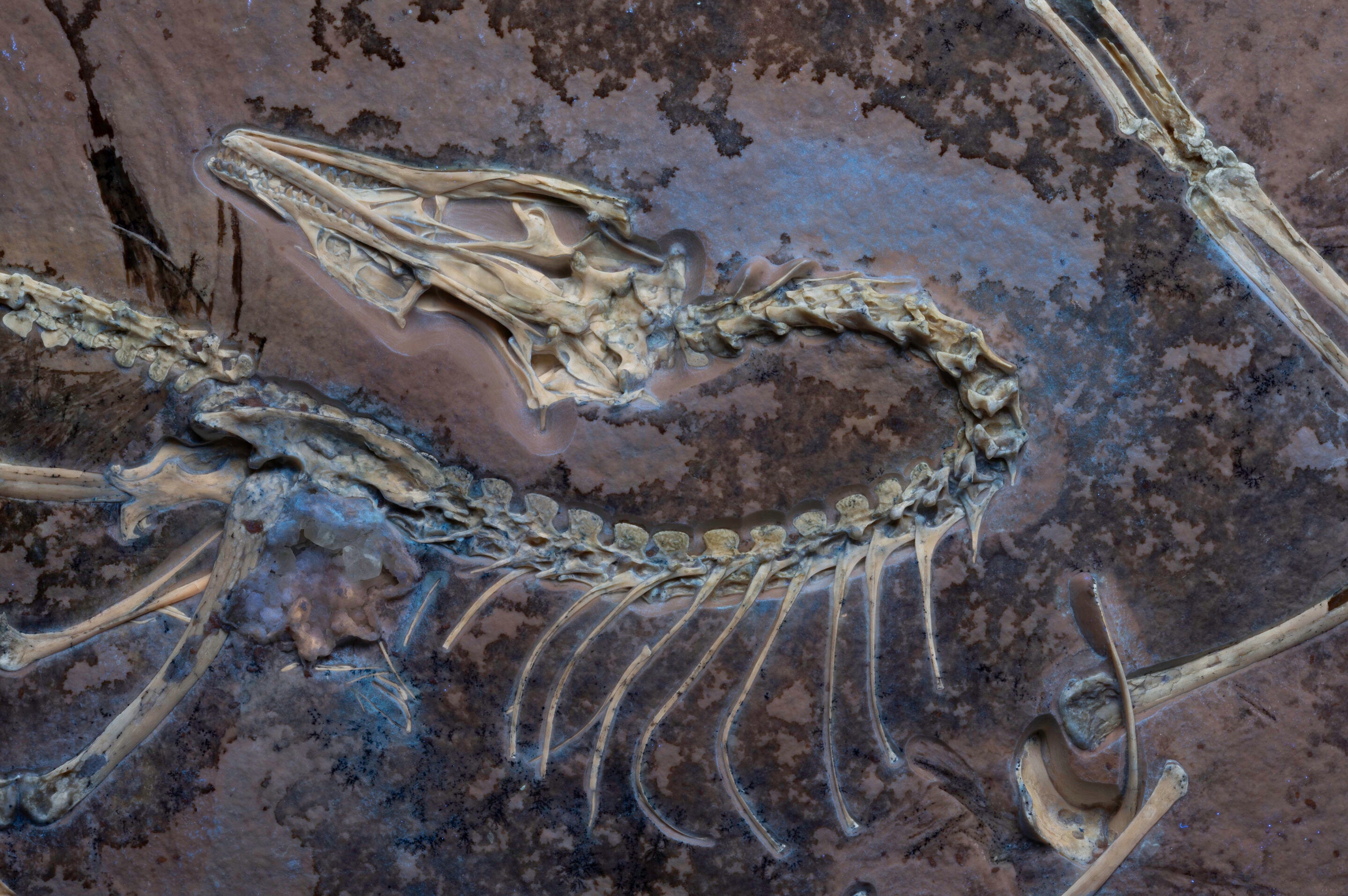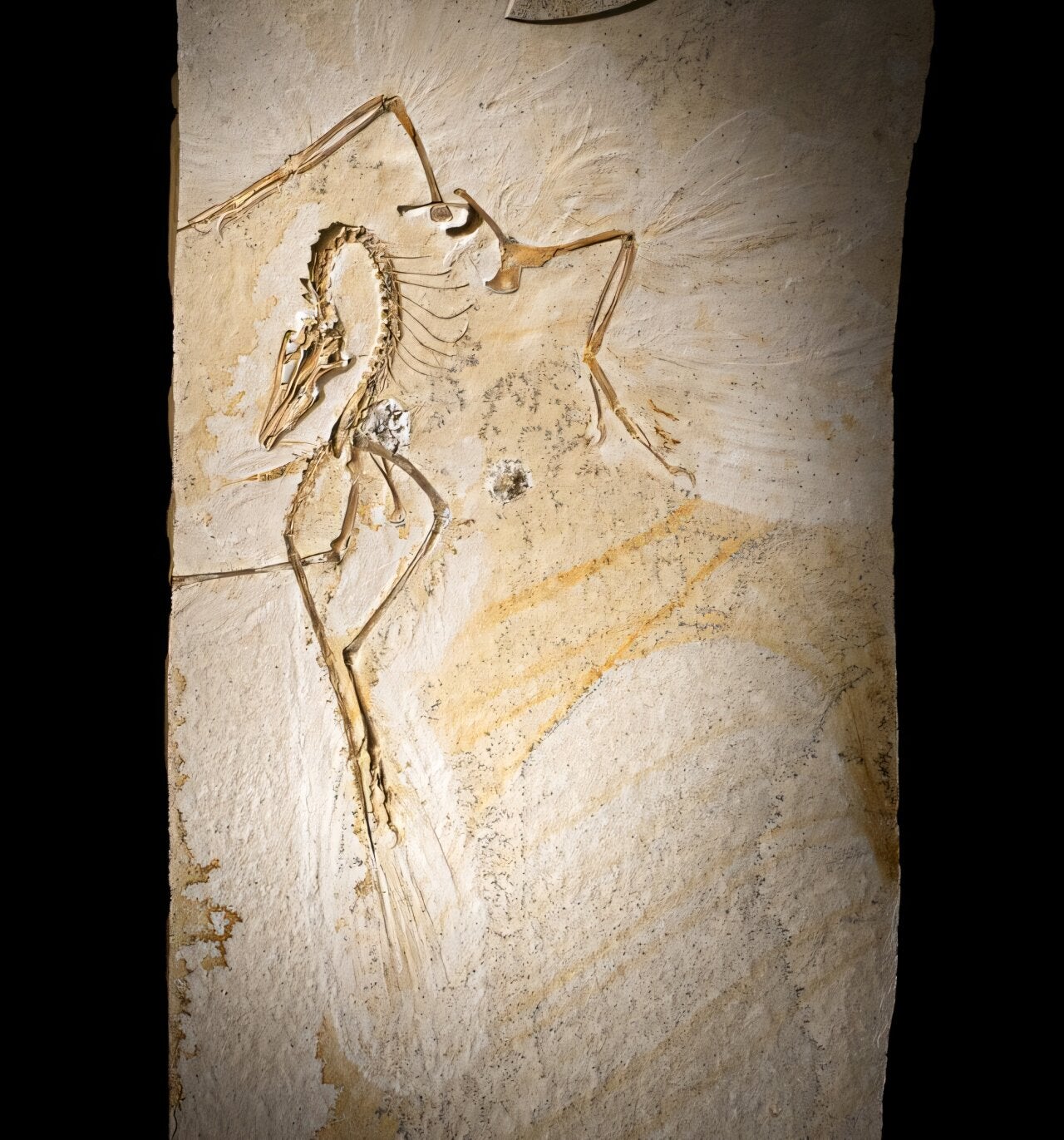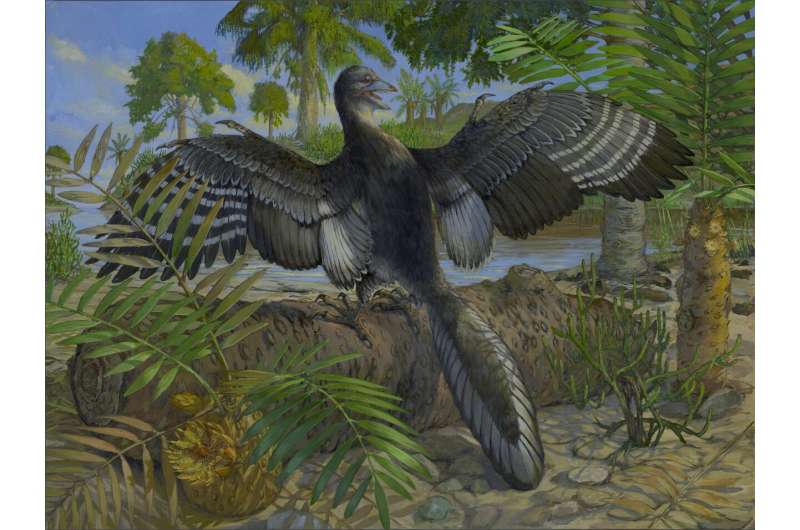ARTICLE AD BOX
Scans of the most well-preserved fossil of a prehistoric flying reptile with intact feathers have revealed how the first birds managed to fly while their non-bird dinosaur cousins could not.
The Archaeopteryx, which lived over 150 million years ago during the Jurassic Period, is the oldest known fossil bird and it shows that all birds, including modern ones, evolved from dinosaurs.
While the prehistoric beast’s first fossil was uncovered over 160 years ago, exactly how it took to the skies while its reptile cousins could not was unknown.
To unravel this mystery, scientists conducted x-ray and UV light scans of the Archaeopteryx at Field Museum’s Chicago, an ultra-rare fossil with more intact soft tissues and skeletal details than ever seen before.
They concluded that its well-preserved feathers helped explain why the archaeopteryx could fly when many of its non-bird dinosaur cousins could not.

The specimen, discovered by a private fossil collector sometime in the last century, arrived at the Field Museum in August 2022.
“Our specimen is so well-preserved and so well-prepared that we are actually learning a tonne of new information, from the tip of its snout to the tip of its tail,” said Jingmai O'Connor, the Chicago museum's associate curator of fossil reptiles who led the latest study.
The specimen is the smallest of the species known – only about the size of a pigeon – and is preserved in a slab of extremely hard limestone.
"When we prepared it, we carefully chipped away the bits of rock covering the fossil,” Dr O'Connor said.

After preparing the fossil, which took about a year of careful work, researchers used CT scans to build a three-dimensional image of its insides.
"CT scanning was very important for our preparation process, it let us know things like the bone is exactly 3.2 millimeters below the surface of the rock, which let us know exactly how far we could go before we would hit the bone,” Dr O'Connor explained. “This is the first time a complete Archaeopteryx has been CT scanned and the data made available.”
Researchers then used UV light to illuminate pieces of the fossil's skeleton and its soft tissues like scales on the bottom of the toes.
They particularly probed the head, hands, feet, and wing feathers. "The bones in the roof of the mouth help us learn about the evolution of something called cranial kinesis – a feature in modern birds that lets the beak move independently from the braincase,” Dr O’Connor said.

Studying this feature could provide new insights into how birds underwent skull adaptations for different ecological niches and evolve into the over 11,000 species we see today, scientists suspected.
Analysis of the hands and feet of the Chicago specimen revealed that the Archaeopteryx spent much of its time walking on the ground and, possibly, climbing trees.
An examination of its wing feathers helped resolve a longstanding scientific debate about the origin of flight in dinosaurs.
“Archaeopteryx isn’t the first dinosaur to have feathers or the first dinosaur to have 'wings’. But we think it is the earliest known dinosaur that was able to use its feathers to fly," Dr O’Connor said. "This is my favourite part of the paper, the part that provides evidence that Archaeopteryx was using its feathered wings for flying.”
-and-Akiko-Shinya-(right)-working-on-the-Chica.jpeg)
Key to the first bird’s flight was likely a set of never-before-seen feathers, called tertials, found on the upper arm of the fossil.
"Compared to most living birds, Archaeopteryx has a very long upper arm bone," Dr O'Connor said.
"And if you're trying to fly, having a long upper arm bone can create a gap between the long primary and secondary feathers of the wing and the rest of your body. If air passes through that gap, that disrupts the lift you're generating, and you can't fly.”
In modern birds, the palaeontologist said, shorter upper arm bones and a set of tertial feathers fill the gap between the body and the rest of the wing.
In the case of Archaeopteryx, however, the tertial feathers alone plugged the gap.
"These feathers are missing in feathered dinosaurs that are closely related to birds but aren't quite birds,” Dr O’Connor said. “Their wing feathers stop at the elbow.”
Researchers said they hoped to gain further understanding of how the first birds were able to fly by continuing their study of the fossil.
“This paper is really just the tip of the iceberg,” they said.









 English (US) ·
English (US) ·